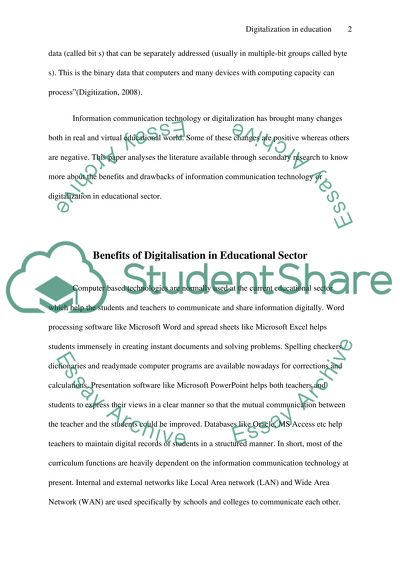Cite this document
(“The benefits and drawbacks of digitalisation in educational sector Essay”, n.d.)
Retrieved from https://studentshare.org/education/1397818-the-benefits-and-drawbacks-of-digitalisation-in-educational-sector
Retrieved from https://studentshare.org/education/1397818-the-benefits-and-drawbacks-of-digitalisation-in-educational-sector
(The Benefits and Drawbacks of Digitalisation in Educational Sector Essay)
https://studentshare.org/education/1397818-the-benefits-and-drawbacks-of-digitalisation-in-educational-sector.
https://studentshare.org/education/1397818-the-benefits-and-drawbacks-of-digitalisation-in-educational-sector.
“The Benefits and Drawbacks of Digitalisation in Educational Sector Essay”, n.d. https://studentshare.org/education/1397818-the-benefits-and-drawbacks-of-digitalisation-in-educational-sector.


